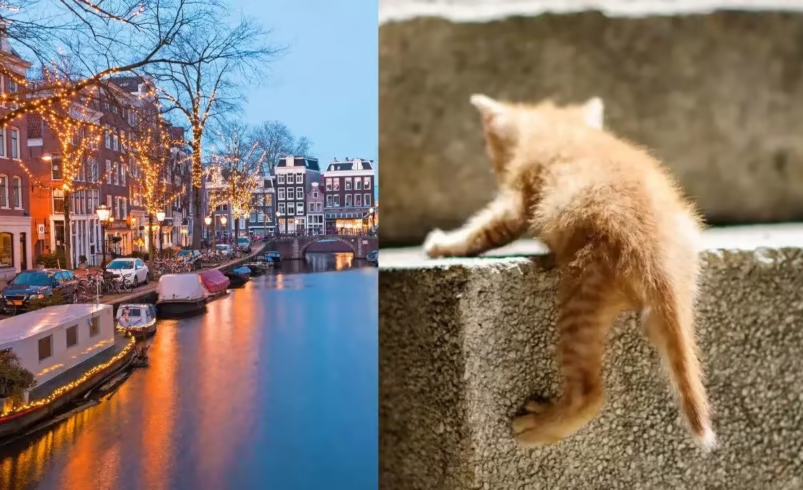Amsterdam’s €100,000 Investment in Tiny Staircases to Protect Animals
- August 6, 2025
- 0

Amsterdam is taking a significant step towards animal welfare by allocating €100,000 for the installation of miniature wooden staircases along its iconic canals. This initiative is designed to provide safe escape routes for animals such as cats, ducks, and hedgehogs, which often find themselves in perilous situations near the water. The project draws inspiration from a similar successful endeavor in Amersfoort, where such staircases have proven effective in reducing animal drownings and minimizing emergency rescue calls.
The idea for these tiny staircases originated from the need to address frequent incidents of animals falling into canals and struggling to escape. In Amersfoort, the implementation of these ladders has already shown promising results, significantly decreasing the number of animal-related emergencies. By adopting this approach, Amsterdam aims to replicate this success and enhance the safety of its urban wildlife.
While primarily intended for animals, these staircases could also serve an unexpected purpose for humans. In instances where individuals accidentally fall into the canals, these ladders may provide a convenient means of escape, potentially preventing accidents and injuries. This dual functionality underscores the project’s broader impact on community safety.
Amsterdam’s investment in these staircases highlights a growing commitment to urban wildlife conservation. By creating safer environments for animals living in close proximity to human habitats, the city sets a precedent for other urban areas facing similar challenges. This initiative not only addresses immediate safety concerns but also fosters a harmonious coexistence between humans and wildlife.